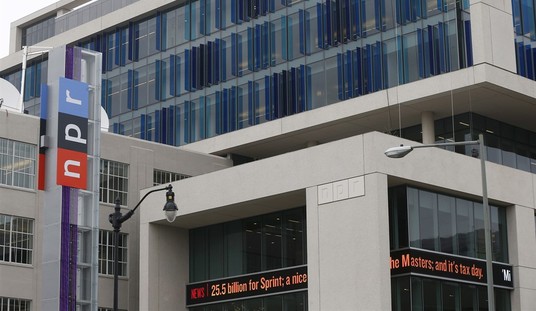When Woodrow Wilson went to Congress to ask for a declaration of war in 1917, the U.S. Army was ranked 17th in the world, behind Portugal.
On Armistice Day, 19 months later, there were 2 million doughboys in France, where they had helped to break the back of Gen. Ludendorff's theretofore invincible army in its final offensive, and 2 million more in the United States ready to march on Berlin.
No other nation could have done that.
After Japan attacked Pearl Harbor in 1941, FDR demanded that a disarmed America "build 50,000 planes" -- a seemingly impossible number, but one America met and exceeded.
Starting from scratch in 1941, the Manhattan Project at Oak Ridge and Los Alamos designed, built, tested and detonated three atomic bombs by August 1945 to end the war.
After Sputnik humiliated America, Wernher Von Braun and the boys at Redstone Arsenal had a satellite up in three months. In 1961, JFK declared we were going to the moon and would be there before the decade was out. Cynics scoffed. This writer was at Canaveral to watch Apollo 11 lift off in the summer of 1969.
Whatever became of that can-do nation?
In August 2005, Katrina swept through New Orleans and left 30,000 people stranded at the Superdome and Convention Center. Though the floodwater was shallow and stagnant and New Orleans is a port city with boats all over the place, it took six days and the 82nd Airborne to rescue the stranded.
Compare our performance in Katrina with that of the Brits in 1941, who sent hundreds of boats across the Channel to pull 350,000 British and French troops off the continent in one week in the Miracle of Dunkirk. The Brits weren't going to let Goering's fighters deter them from going across and bringing their boys home.
Recommended
What occasions these reflections is this morning's lead story in The Washington Post: "'Virtual Fence' Along Border to Be Delayed: U.S. Retooling High-Tech Barrier After 28-Mile Project Fails."
The opening paragraphs:
"The Bush administration has scaled back plans to quickly build a 'virtual fence' along the U.S.-Mexico border, delaying completion of the first phase of the project by at least three years and shifting away from a network of tower-mounted sensors and surveillance gear. ...
"Technical problems discovered in a 28-mile pilot project south of Tucson prompted the change in plans. ..."
Thus, building the first 100 miles of "virtual fence" will take Bush longer than it took FDR to win World War II. The admission of failure comes two years after Bush announced plans for "the most technologically advanced border initiative in American history."
"The virtual fence," writes the Post, "was to complement a physical fence that the administration now says will include 370 miles of pedestrian fencing and 300 miles of vehicle barriers to be completed by the end of this year. The GAO says this portion of the project may also be delayed and that its total cost cannot be determined. The president's 2009 budget does not propose funds to add fencing beyond the 700 or so miles meant to be completed by this year."
In short, these characters cannot build a virtual fence and won't complete a physical fence. If the nation is fed up with Republicans, who can blame them?
Securing a border is not that difficult. In 1954, President Eisenhower sent an Army general to Texas to do it. He began repatriating thousands of Mexicans and had the situation in hand within a year. Along the San Diego corridor, a crude fence of corrugated steel matting from U.S. airfields in Vietnam has stopped illegal trucks from crossing, cut back 90 percent on the illegal alien traffic, and virtually eliminated murders and assaults in the border area.
Measures taken lately at the state and federal level, though grudgingly by the administration, have begun to bear fruit.
After Arizonans voted to cut off all social benefits to residents who could not prove they were in the country legally came reports of people pulling their kids out of public schools and leaving the state.
From the border come reports that added Border Patrol agents have reduced the number of illegal aliens apprehended, suggesting word has gone out south of the border that it is no longer so easy to walk in. And deportations of criminal aliens, long demanded, is actually going up.
Let it be said: Our border can be secured; the illegal aliens can be sent home; the magnets that draw them here can be turned off. This crisis can be resolved if the courage and will are there. Unfortunately, we have a government that does not seem to care and probable nominees neither of whom is committed in his heart to doing it.
Given the manifest will of the people that this invasion from the south be halted and rolled back, the 2008 election is shaping up as yet further confirmation that American democracy is a fraud.
























Join the conversation as a VIP Member